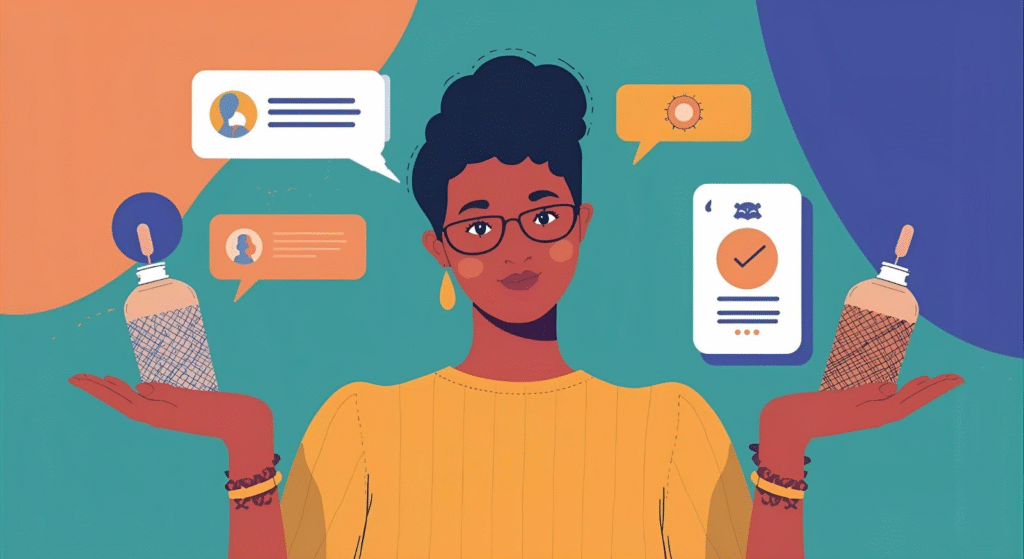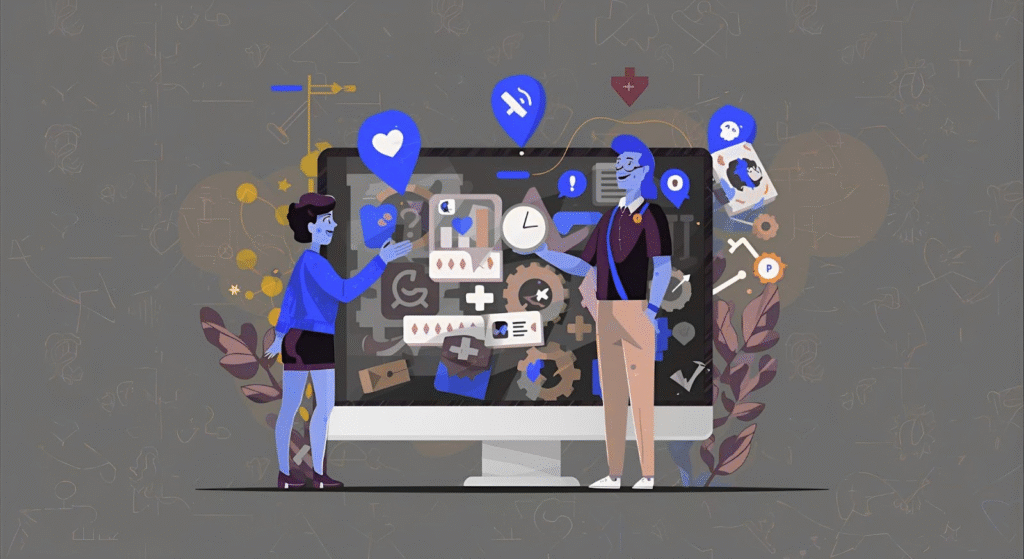Local influencer marketing represent powerful allies for local businesses seeking authentic community engagement and enhanced search visibility through strategic social proof and content collaboration. These content creators, typically possessing 1,000 to 100,000 followers within specific geographic markets, offer local businesses access to highly engaged audiences with genuine community connections and trusted recommendations that influence local search behavior. The intersection of micro-influencer marketing and local SEO creates synergistic opportunities that extend beyond traditional social media metrics to encompass backlink generation, brand mention optimization, and local authority building that directly impacts organic search performance.
The effectiveness of micro-influencer partnerships for local SEO stems from their ability to generate authentic content that resonates with local audiences while creating digital assets that support search engine optimization objectives. Modern consumers increasingly rely on peer recommendations and local community voices when making purchasing decisions, with micro-influencers serving as credible intermediaries who bridge businesses and potential customers through genuine experiences and authentic storytelling. This authenticity translates into SEO benefits through increased brand searches, improved engagement metrics, and enhanced local relevance signals that search engines value highly.
Key Takeaways
• Community-based partnerships leverage micro-influencers’ local credibility to generate authentic content that improves local search relevance and community engagement
• Content collaboration strategies create SEO-optimized materials including blog posts, social content, and video reviews that provide backlinks and brand mentions supporting local search authority
• Local event amplification through micro-influencer partnerships increases community visibility while generating location-specific content that strengthens hyperlocal SEO performance
• User-generated content campaigns encouraged by micro-influencers create scalable content assets that support local keyword targeting and social proof development
• Cross-platform optimization ensures influencer content serves both social media and search engine objectives through strategic hashtag usage, location tagging, and mention optimization
• Performance measurement integration tracks influencer campaign impact on local search metrics including brand searches, local rankings, and website traffic attribution
Overview
Successful micro-influencer strategies for local SEO require systematic approaches to partnership development, content collaboration, and performance measurement that balance social media engagement with search optimization objectives. This comprehensive guide examines proven methodologies for identifying relevant micro-influencers, developing collaborative content that serves SEO purposes, and measuring campaign effectiveness through both social and search metrics that demonstrate business value and guide strategy optimization.
Understanding Micro-Influencers in Local Markets
Micro-influencers differ significantly from macro-influencers and celebrities in their community integration, audience engagement rates, and content authenticity that resonates particularly well with local audiences seeking genuine recommendations. Research demonstrates that micro-influencers achieve engagement rates 3-7 times higher than larger influencers while maintaining stronger personal connections with their audiences through regular interaction and community involvement. This engagement translates into SEO benefits through increased click-through rates, longer session durations, and higher conversion rates for local businesses partnering with relevant micro-influencers.

Local micro-influencers possess intimate knowledge of community dynamics, seasonal trends, and neighborhood preferences that enable creation of highly relevant content addressing specific local search intents. Their content naturally incorporates location-specific references, local landmarks, and community events that align with hyperlocal SEO strategies while providing authentic context that resonates with target audiences. This local expertise proves particularly valuable for businesses seeking to improve visibility for neighborhood-specific searches and location-based queries.
The trust factor associated with micro-influencers significantly impacts their effectiveness for local SEO campaigns, with audiences viewing their recommendations as peer advice rather than traditional advertising. This perceived authenticity leads to higher engagement rates, increased sharing behavior, and stronger word-of-mouth amplification that extends campaign reach beyond initial follower counts while creating additional SEO benefits through expanded brand mention opportunities and social signal generation.
Audience Quality and Engagement Patterns
Micro-influencer audiences typically demonstrate higher purchase intent and stronger local connections compared to followers of larger influencers, making them particularly valuable for local businesses seeking qualified leads and community engagement. The concentrated geographic focus of many micro-influencers ensures that campaign reach aligns closely with business service areas while minimizing wasted impressions on irrelevant audiences outside target markets.
Engagement patterns among micro-influencer audiences reveal deeper interaction levels including detailed comments, genuine questions, and authentic conversations that provide valuable feedback and customer insights. This engagement data helps local businesses understand customer preferences, common concerns, and community interests that inform broader content and SEO strategies while providing social proof that influences search engine evaluation of brand authority and relevance.
Identifying and Vetting Local Micro-Influencers
Effective micro-influencer identification requires systematic research approaches that evaluate audience demographics, content quality, engagement authenticity, and local market relevance. Social media monitoring tools including Hootsuite, Sprout Social, and specialized influencer platforms provide insights into follower demographics, engagement rates, and content performance that inform partnership decisions. Geographic filtering capabilities enable identification of influencers with strong local followings that align with business service areas and target customer locations.
Audience analysis extends beyond follower counts to examine engagement quality, comment authenticity, and demographic alignment with target customer profiles. Authentic micro-influencers demonstrate consistent engagement patterns, genuine follower interactions, and content themes that align with their stated interests and expertise areas. Red flags include sudden follower growth spikes, repetitive or generic comments, and engagement rates that seem disproportionate to content quality or follower count.
Content quality assessment evaluates production values, posting consistency, and message alignment with brand values while ensuring influencer content standards support professional brand representation. Local micro-influencers should demonstrate familiarity with community businesses, events, and locations while maintaining content quality that reflects positively on potential business partners. Portfolio reviews help assess content style compatibility and professional reliability.
Due Diligence and Partnership Evaluation
Background research includes reviewing past brand partnerships, sponsored content disclosures, and professional reputation within local business communities. Ethical influencers maintain transparent disclosure practices, demonstrate professional communication, and show evidence of successful past collaborations that generated positive outcomes for business partners. Reference checking with previous partners provides insights into work quality, reliability, and campaign effectiveness.
Legal and compliance considerations include ensuring influencers understand FTC disclosure requirements, intellectual property guidelines, and content usage rights that protect both parties while maintaining regulatory compliance. Clear agreements should address content ownership, usage rights, exclusivity periods, and performance expectations that align with business objectives while respecting influencer creative autonomy.
Partnership Strategy Development
Successful micro-influencer partnerships require strategic planning that aligns influencer capabilities with business objectives while creating mutually beneficial arrangements that motivate high-quality content creation. Partnership structures should balance creative freedom with brand messaging requirements while establishing clear performance expectations and success metrics that guide campaign execution and evaluation.
Campaign objectives must extend beyond social media metrics to include SEO-specific goals including brand mention generation, backlink acquisition, local keyword integration, and search visibility improvement. These objectives inform content brief development, performance measurement approaches, and partnership evaluation criteria that ensure campaigns deliver comprehensive digital marketing value rather than isolated social media outcomes.
Compensation models should reflect campaign complexity, content requirements, and expected business impact while remaining competitive within local influencer markets. Options include monetary compensation, product exchanges, experience packages, and long-term partnership arrangements that provide ongoing value while building sustained relationships that support multiple campaign objectives over time.
Content Collaboration Framework
Content collaboration approaches range from sponsored posts and product reviews to comprehensive content series and event partnerships that provide multiple touchpoints and sustained engagement opportunities. Strategic content planning ensures consistent messaging across multiple posts while allowing creative flexibility that maintains authentic influencer voice and style preferences.
Cross-platform content strategies maximize campaign reach while serving different SEO objectives through platform-specific optimization approaches. Instagram content supports visual engagement and local hashtag targeting, while blog collaborations provide backlink opportunities and long-form content that addresses local search queries in detail. YouTube partnerships create video content that supports local search visibility while providing engaging formats for product demonstrations and experience sharing.
Content Optimization for Local SEO
Micro-influencer content optimization requires balancing authentic storytelling with strategic SEO elements that support local search visibility without compromising content authenticity or audience engagement. Location-specific content development includes references to local landmarks, neighborhood names, and community events that naturally incorporate hyperlocal keywords while providing relevant context for local audiences seeking area-specific recommendations.

Hashtag strategies should combine branded hashtags, location tags, and relevant local keywords that improve content discoverability while supporting local search objectives. Strategic hashtag usage includes neighborhood-specific tags, local event hashtags, and business category keywords that align with target audience search behavior while maintaining natural content flow and authentic voice.
Link building opportunities through influencer content include website mentions, blog collaborations, and strategic placement of business links within authentic content contexts. Natural link integration requires providing genuine value to influencer audiences while supporting business SEO objectives through authoritative backlink generation from locally relevant content creators.
User-Generated Content Integration
User-generated content campaigns amplified through micro-influencer partnerships create scalable content assets that support ongoing SEO efforts while building community engagement around brand experiences. Strategic UGC campaigns include hashtag challenges, photo contests, and review generation initiatives that encourage audience participation while creating content that serves local search optimization objectives.
Content amplification strategies ensure influencer-created content reaches maximum audiences through cross-platform sharing, website integration, and strategic promotion that extends campaign reach beyond initial influencer followings. Repurposing influencer content for business websites, social media channels, and marketing materials maximizes content value while providing consistent messaging across multiple touchpoints.
Local Event Partnerships and Community Engagement
Event-based micro-influencer partnerships provide opportunities for real-time content creation, community engagement, and local SEO benefit generation through location-specific content and social proof development. Local events including festivals, business openings, seasonal celebrations, and community gatherings offer natural collaboration opportunities that benefit both businesses and influencers while serving local audiences seeking event information and recommendations.
Live content creation during events generates immediate engagement while providing authentic documentation of business participation in community activities. This real-time content demonstrates local involvement while creating social proof that influences search engine evaluation of business community integration and local relevance.
Pre-event promotion through influencer partnerships builds anticipation while driving traffic to business locations and websites through strategic content that includes event details, location information, and participation encouragement. Post-event content extends campaign value through recap posts, photo sharing, and experience documentation that continues engagement while providing lasting content assets for ongoing SEO benefit.
Community Partnership Development
Long-term community partnerships with micro-influencers create sustained local SEO benefits through ongoing content creation, relationship building, and community integration that extends beyond individual campaigns. Strategic partnership development includes regular collaboration opportunities, exclusive access to events or products, and integration into broader community engagement strategies that benefit all parties while building sustained local market presence.
Collaborative community initiatives including charity partnerships, local cause support, and neighborhood improvement projects provide authentic content opportunities while demonstrating genuine community commitment that resonates with local audiences and search engines evaluating local business authority and relevance.
Performance Measurement and Analytics
Comprehensive performance measurement for micro-influencer campaigns requires tracking both social media metrics and SEO-specific outcomes that demonstrate campaign contribution to local search visibility and business objectives. Social media analytics provide insights into engagement rates, reach statistics, and audience interaction patterns that inform campaign optimization and future partnership decisions.
SEO performance measurement includes tracking brand mention increases, backlink acquisition, local search ranking improvements, and website traffic attribution from influencer campaigns. Google Analytics integration enables tracking of referral traffic from social media platforms while providing insights into user behavior, conversion rates, and revenue attribution from influencer-driven traffic.
Search volume monitoring for branded terms and local keywords helps assess campaign impact on search behavior while identifying opportunities for content optimization and keyword targeting refinement. Brand awareness measurement through search volume trends provides insights into campaign effectiveness beyond immediate social media metrics.
ROI Assessment and Optimization
Return on investment calculation for micro-influencer campaigns should consider both immediate social media outcomes and long-term SEO benefits including sustained search visibility improvements, ongoing backlink value, and continued brand mention benefits. Comprehensive ROI assessment includes customer acquisition costs, lifetime value analysis, and attribution modeling that accounts for multi-touch customer journeys influenced by influencer content.
Campaign optimization based on performance data enables continuous improvement through partnership refinement, content strategy adjustment, and budget reallocation toward highest-performing influencers and content formats. Data-driven optimization ensures campaign effectiveness while building knowledge base for future partnership decisions and strategy development.
Platform-Specific Strategies and Optimization
Different social media platforms require tailored approaches that maximize both social engagement and SEO benefits through platform-specific optimization strategies. Instagram partnerships focus on visual content, story features, and location tagging that support local discovery while providing engaging content formats for product showcasing and experience documentation.

Blog collaborations through platforms like WordPress and Medium provide opportunities for detailed content creation, backlink generation, and comprehensive local keyword integration that serves search engine optimization objectives while offering influencers creative freedom for authentic storytelling and detailed experience sharing.
YouTube partnerships create video content that supports local search visibility through video SEO optimization, local keyword integration, and engaging formats for business promotion. Video content provides opportunities for detailed product demonstrations, location showcases, and authentic testimonials that serve both social engagement and search optimization objectives.
Cross-Platform Integration and Amplification
Cross-platform content strategies ensure maximum campaign reach while serving different audience preferences and platform algorithms. Strategic content adaptation enables single collaborations to generate multiple content assets across different platforms while maintaining message consistency and brand alignment across all touchpoints.
Content repurposing strategies maximize influencer partnership value through strategic adaptation of core content for different platforms, audiences, and objectives while ensuring consistent messaging and optimal performance across all channels utilized in comprehensive campaign approaches.
Frequently Asked Questions
How do micro-influencers specifically benefit local SEO compared to traditional marketing? Micro-influencers provide authentic local content, generate backlinks from community-connected profiles, increase brand searches, and create social proof that influences local search rankings. Their community integration enables hyperlocal keyword targeting and location-specific content that traditional marketing struggles to achieve authentically.
What criteria should local businesses use to select micro-influencers for SEO campaigns? Selection criteria include local audience demographics, engagement authenticity, content quality alignment with brand values, geographic relevance to service areas, and demonstrated community integration. Businesses should prioritize engagement rates over follower counts while ensuring audience demographics match target customer profiles.
How can businesses measure the SEO impact of micro-influencer partnerships? SEO impact measurement includes tracking brand mention increases, backlink acquisition, local search ranking improvements, branded search volume growth, and website traffic attribution from social platforms. Google Analytics and search console data provide insights into campaign contribution to organic search performance.
What content formats work best for combining social engagement with SEO benefits? Effective formats include blog collaborations with backlinks, location-tagged social posts with local keywords, video content optimized for search, user-generated content campaigns, and event coverage that incorporates local references. Cross-platform content strategies maximize both social and search benefits.
How should businesses approach FTC disclosure requirements with micro-influencers? Disclosure requirements mandate clear identification of paid partnerships through hashtags like #ad or #sponsored, transparency about compensation arrangements, and honest opinions that maintain authenticity. Education and clear guidelines ensure compliance while protecting both parties from regulatory issues.
What budget considerations apply to micro-influencer campaigns for local businesses? Micro-influencer compensation typically ranges from $100-$1,000 per campaign depending on follower count, content requirements, and market dynamics. Local businesses should budget for both influencer fees and campaign management while considering long-term partnership opportunities that provide ongoing value.
How do seasonal trends affect micro-influencer campaign effectiveness for local SEO? Seasonal campaigns align with local search patterns, community events, and shopping behaviors that influence both social engagement and search visibility. Strategic timing around holidays, local events, and seasonal business cycles maximizes campaign impact while supporting year-round local SEO objectives.
Sources
Social Media Marketing Resources:
Influencer Marketing Platforms:
SEO and Analytics Tools:
Local SEO Resources:
Content Marketing and Collaboration:
Amplify your local SEO success through strategic micro-influencer partnerships that build authentic community connections while driving measurable search performance improvements. Cloud 7 Agency specializes in developing comprehensive influencer strategies that combine social media engagement with local SEO objectives, creating sustainable competitive advantages through community-based marketing approaches. Contact our digital marketing specialists today to discover how micro-influencer partnerships can enhance your local search visibility and community presence.

